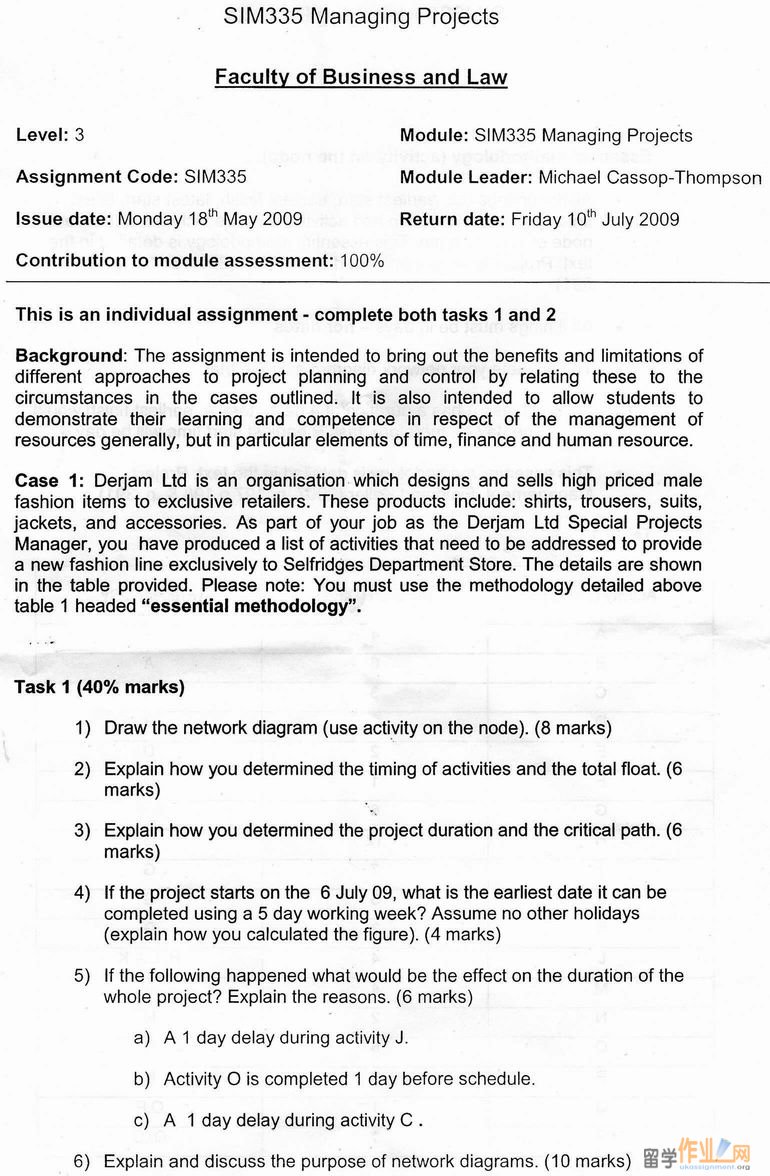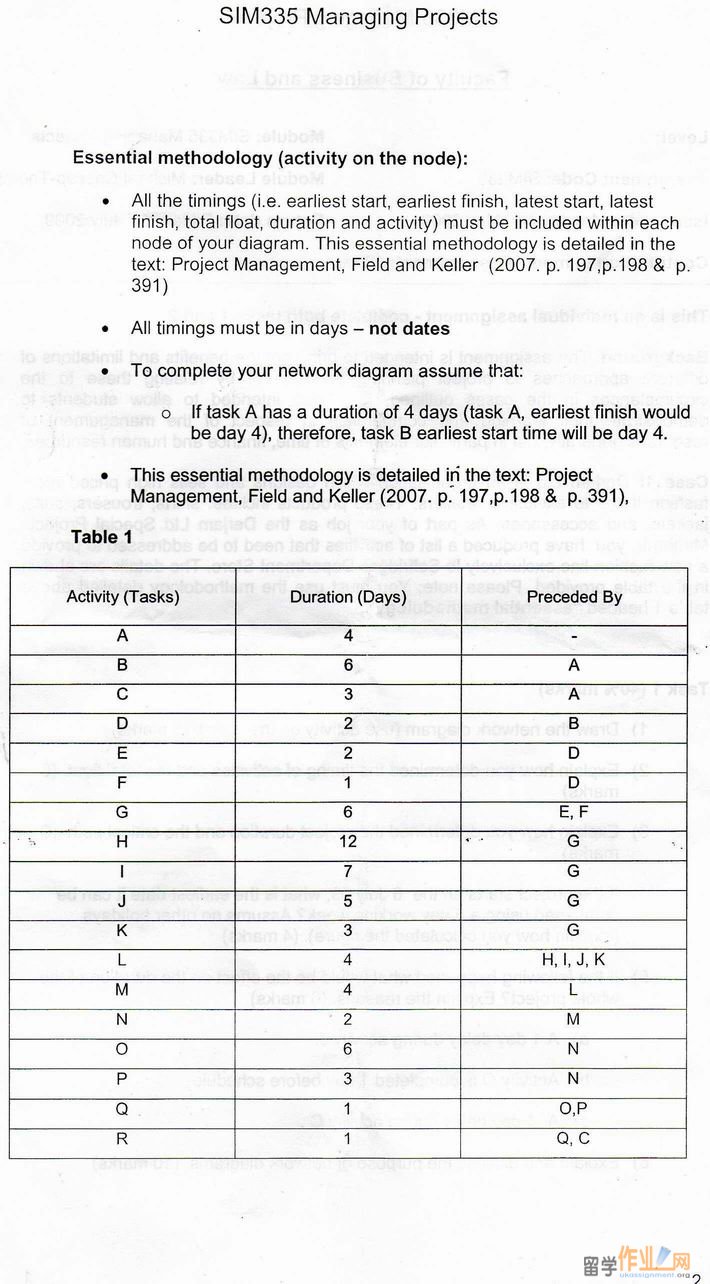|
Contemporary Development in Business and Management 
Section A: Answer all questions-Case Study (40 marks) -2500 words Section B: Answer TWO questions from FOUR-essay and report questions (60 marks) -each question should be completed in no more than 1750 words each.#p#分页标题#e# Section A A talent for numbers Financial services provider Standard Chartered is in the business of hard data.So it's no surprise that HR turned to facts and figures when it revamped the bank's talent management activities Date:14 June 2007 Geraldine Haley, group head of talent management and leadership development, is speaking on talent management at the CIPD's Annual Conference in Harrogate on 18-20 September- www.cipd.co.uk/ace The thing about bankers is that they like figures. If you're trying to convince them of something, you first need to let them examine the data. Show them the numbers to back up your argument and they might just accept whatever you want to sell. Turn up with woolly statements and you'll get short shrift. So, when Standard Chartered started revamping its talent management activities a few years ago, the bank's HR team knew that the process had to be driven by hard data. In fact, the need to present the facts and figures behind any proposed initiative became one of its guiding principles. The result has been a talent management programme backed up by detailed information about the worldwide workforce that can be analysed office by office, team by team, across continents or product areas or by type of employee, to show where help is needed or if resources are being used well. Three other principles underpin the bank's talent programme: that a great business needs great managers; that great managers build staff engagement; and that people perform best when they play to their strengths. This approach to talent management reflects a wider strategic emphasis on people that has seen HR issues ascend the corporate agenda, with the bank's declared goal of measurably increasing its leadership capacity by 2001. This is no easy challenge, because Standard Chartered is an unusual beast. An international retail and corporate bank with headquarters in London, it is listed in London an Hong Kong but derives 90 per cent of its profits from Asia, Africa and the Middle East. Like all financial services firms, Standard Chartered is fighting for a limited pool of talent. But, given its focus on fast-developing markets, it has to fight harder than most. Operating in more than 50 countries and with 60,000 employees of 100 different nationalities, Standard Chartered faces some tough HR challenges. How do you ensure that you have great managers everywhere in such diverse geographies and cultures? Actually, Haley says, cultural differences are not as significant as you might imagine. And she should know: Haley travels a lot and has held senior HR posts with the bank for more than 15years,spending several in Singapore, before returning to London. "In my experience there cultural norms that vary between countries, but the biggest determinant is the way an individual manager chooses to do something," she says.#p#分页标题#e# The bank's approach has been to introduce curtain global standards and tools, but to give managers some freedom to decide locally how best to use them. So, for example, a six-monthly performance appraisal, preferably with a face-to-face interview between employee and manager,is a worldwide standard. But there are extra options that managers can choose from. Tim Miller, derector, people, property and assurance at the bank, elaborates:"We give the managers appraisal tools such as 180-degree of 360-degree feedback. Our African businesses like the 360-degree, team-based approach. In China they are more reticent about it and prefer 180-degree feedback. But it's up to the local manager what they choose." Appraisal is a key part of talent management at Standard Chartered, not only in its own right, but also because it's used to classify employees into five categories, ranging from high-potntials (Hipos) to underperformers. This system allows the bank to manage its talent by revealing the skills and potential inside its workforce-and showing where there are gaps. "Hipos are people with significant headroom, who would be expected to rise at least two further levels in the foreseeable future," Haley explains. Second are critical resources: people who have the potential to improve and whom the bank certainly wants to keep, but who are not real high-flyers. Third are core contributors. “They are valuable resources who are probably doing what they do best now," Haley says. Fourth are underachievers, who could be doing better and should be helped to do so. Bottom of the pile are underperformers, who are "in the wrong job and should be moved into another role or managed out". All employees, from juniors to one level below the board, are assessed annually according to this system in conjunction with their interim reviews. Combining classification with appraisal has kept the burden for managers to a minimum because they see it as part of the same process. Crucially, people aren't told how they've been classified, although Haley says it's a matter of ongoing debate whether this should change. The danger is that openly labelling employees could be counterproductive, demotivating some and encouraging others to brag. What's more, she says, the point of the classification system is not to label, but to allow managers to take stock. "It helps the manager to do an annual stock-take of his capacity. When he sees the data, he can say:' I need to give this group of people more attention or that group extra training.'" Employee data collected in this way is aggregated on a global level. A service centre in Chennai, India, crunches all the numbers and produces regular human capital scorecards. "That helps us to look strategically at our capacity," Haley says. "We can show a national CEO what's happening in their country compared with others. We measure attrition, internal versus external recruitment, promotion rates, or whether people are achieving their personal development plans."#p#分页标题#e# So what has the data revealed globally? "The biggest message is that we have been losing a lot of new recruits within 12 months," Haley says. In response, the bank has developed a gloabal induction programme, called Right Start, called Right Start, which covers every new arrival. The data has also shown exceptionally high attrition rates in some of the fastest-growing markets, such as China. Although an attrition rate of 10 per cent might be something to worry about in mature markets, anything lower than 20 per cent is considered good in China. "Because of the challenge of attrition, a lot of talent management is about staff engagement, personal development and career planning," Haley says. So, for example, China has worked on embedding values and on English lanhuage training. Does having so much data leave managers feeling overwhelmed? On the contrary, claims Haley:"Despite the amount that's produced, they sometimes want more and we have to say:'We've got enough information.'" But one danger os that you measure the wrong thing. The bank has had to move from tracking processes, such as the number of people with development plans, to measuring outcomes. As for creating "great managers”,the bank has tried a number of initiatives. It has identified 250 senior people whose leadership skills it is seeding to boost. Using a structured interview, developed by the Gallup Organization and based on the idea that people should play to their strengths (see panel, page 37), individual profiles are created that increase leaders' self-awareness. In the past four years all top managers have been profiled and been offered coaching by a team of five globetrotting "leadership facilitators." "The people being coached would be those with big regional or global roles," Haley says. "We focus there because if you improve the performance of these people by only 5 per cent the impact will be significant." Managers at all levels can tap into a growing range of self-help tools. For example, a product called Conversations that Matter helps them improve the skills needed for discussions such as appraisal interviews. A wider programme on how to be a great manager is due to be rolled out this year. This will be delivered via a range of media, including podcasts, videos and workshops. None of this would have been possible without management support - and this goes right to the top. Chief executive Peter Sands says that one of the most personally rewarding things he has done in his own career is to help talented people realise their full potential. And he adds:"Most of it is about giving them the confidence to make the most of their strengths." Accentuate the positive In addition to personal interviews for top managers, about 6,000 employees have taken an online StrengthsFinder test, which identifies their top five attributes. This approach was developed by the Gallup Organization, whose senior-researcher-turned-management-guru Marcus Buckingham looked at 25 years of research and found that the most successful organizations were those where people focused on what they did best. At Standard Chartered about 200 HR managers worldwide are specially trained to help individuals interpret their test results and give feedback. According to Haley, the strengths-based philosophy is especially valuable in an international environment because ti transcends cultural differences. "It gives people the good news and allows managers to focus on that," she says. The CIPD's talent study Tim Miller, director,people, property and assurance, at Standard Chartered bank, is speaking on employee engagement at the CIPD's Annual Talent Management, Recruitment and Retention Conference in Olympia, London, on 19-21 June. For more details contact the CIPD on: Answer all of the following questions for section a, Question 1: 1.1 To what extent does the approach to Talent Management at Standard Chartered Bank display features of SHRM? (15 marks) 1.2 Given the current world crisis in the Banking industry how might you defend the continued use of the talent management programme as a driver of longer term change? (15 marks) 1.3 Why is it important to measure the impact of SHRM? What might be included in a evaluation strategy to measure the impact of SHRM in an organization to achieve strategic integration? (10 marks) Word Limit 2500 Section B Answer TWO questions from this section 2. If the HR/Personnel Department is to gain credibility in leading SHRM activity in organizations critically assess how this can be done with reference to contemporary case examples. (30 marks) General Assessment criteria 1. Critical appraisal of the subject ideas and practices 
|
 |
|||
| 网站地图 |

